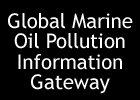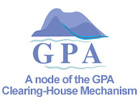|
CONTINGENCY PLANS
As
summarized by Environment Canada, a contingency
plan "is a plan for action prepared in anticipation of
an oil spill. Contingency plans are essential because they
establish practical plans of action for all types of oil spills
so that, when spills do occur, a quick response can minimize
the damage. The first step in developing a plan is to learn
as much about the area as possible. Regardless of the geography
or the size of an area, contingency plans normally include:
- identification
of authority and a chain of command;
- a
list of persons and organizations that must be immediately
informed of a spill;
- an
inventory of available trained spill personnel and spill
response equipment;
- a
list of jobs that must be done (in order of priority);
- a
communication network to coordinate response;
- probable
oil movement patterns under different weather conditions;
and
- sensitivity
maps and other technical data.
Planners
need to know about:
- important
or sensitive physical and biological resources within or
near the area, such as marshes, unusual flora (plant life)
and wildlife resources such as fish, shellfish, marine mammals
and birds;
- important
habitat areas required by particular species for spawning,
feeding or migration;
- tides,
currents and local climatic conditions, such as wind and
severe weather patterns;
- shoreline
characteristics; and
- proximity
to roads, airports, trained response personnel, oil spill
clean-up equipment, etc."
RESPONSE
TECHNIQUES
 As summarized by International Tanker Owners Pollution Federation
Ltd (ITOPF), "there are two approaches
for responding to marine oil spills at sea: the enhancement
of natural dispersion of the oil by using dispersant
chemicals, and containment and
recovery of oil using booms
and skimmers. Sorbent materials may
be useful in the final stages of clean up as a polishing tool.
(Once oil strands on shore, a shoreline
clean-up will be necessary.) Despite continuing research,
there has been little change in the fundamental technology
for dealing with oil spills. Alternative techniques are constantly
being sought and old techniques re-assessed. Two techniques
currently receiving fresh attention are in-situ
burning and the enhancement of the natural biodegradation
of oil through the application of
micro-organisms and/or nutrients."
As summarized by International Tanker Owners Pollution Federation
Ltd (ITOPF), "there are two approaches
for responding to marine oil spills at sea: the enhancement
of natural dispersion of the oil by using dispersant
chemicals, and containment and
recovery of oil using booms
and skimmers. Sorbent materials may
be useful in the final stages of clean up as a polishing tool.
(Once oil strands on shore, a shoreline
clean-up will be necessary.) Despite continuing research,
there has been little change in the fundamental technology
for dealing with oil spills. Alternative techniques are constantly
being sought and old techniques re-assessed. Two techniques
currently receiving fresh attention are in-situ
burning and the enhancement of the natural biodegradation
of oil through the application of
micro-organisms and/or nutrients."
 Also, according to ITOPF: "Aerial reconnaissance is an
essential element of effective response to marine oil spills.
It is used for assessing the location and extent of oil contamination
and verifying predictions of the movement and fate of oil
slicks at sea. Aerial surveillance
provides information facilitating deployment and control of
operations at sea, the timely protection of sites along threatened
coastlines and the preparation of resources for shoreline
clean-up. Observation can be undertaken visually or by use
of remote sensing systems.
Also, according to ITOPF: "Aerial reconnaissance is an
essential element of effective response to marine oil spills.
It is used for assessing the location and extent of oil contamination
and verifying predictions of the movement and fate of oil
slicks at sea. Aerial surveillance
provides information facilitating deployment and control of
operations at sea, the timely protection of sites along threatened
coastlines and the preparation of resources for shoreline
clean-up. Observation can be undertaken visually or by use
of remote sensing systems.
 Initial clean-up responses to a spill
at sea are often based upon the use of dispersant chemicals
or the containment and recovery of oil using booms and skimmers.
Whilst these techniques can be of use in the right circumstances,
there are many difficulties associated with employing them
effectively. The type of oil and concerns over potential impacts
of dispersed oil can preclude dispersant use. For example,
they are not effective against many commonly transported oils
which have a high viscosity, and soon become ineffective against
lighter oils because natural weathering processes or the formation
of water-in-oil emulsions greatly increases oil viscosity,
often very quickly (a few hours to one to two days). The application
of dispersant to treat large quantities of spilled oil also
requires specialised equipment and extensive logistical support.
Containment and recovery is limited by sea conditions and
the relatively small oil encounter rate which the available
systems can achieve.
Initial clean-up responses to a spill
at sea are often based upon the use of dispersant chemicals
or the containment and recovery of oil using booms and skimmers.
Whilst these techniques can be of use in the right circumstances,
there are many difficulties associated with employing them
effectively. The type of oil and concerns over potential impacts
of dispersed oil can preclude dispersant use. For example,
they are not effective against many commonly transported oils
which have a high viscosity, and soon become ineffective against
lighter oils because natural weathering processes or the formation
of water-in-oil emulsions greatly increases oil viscosity,
often very quickly (a few hours to one to two days). The application
of dispersant to treat large quantities of spilled oil also
requires specialised equipment and extensive logistical support.
Containment and recovery is limited by sea conditions and
the relatively small oil encounter rate which the available
systems can achieve.
 Together, these factors usually mean that only
a small fraction of a major spill can be dealt with at sea,
and it is almost inevitable that oil will threaten coastal
resources. ••• Protective strategies
are seldom employed to the extent possible and it will usually
be necessary to mount a shoreline response operation. Priorities
for protection and clean-up will need to be agreed and care
must be taken to ensure that the techniques selected do not
do more damage than the oil alone.
Together, these factors usually mean that only
a small fraction of a major spill can be dealt with at sea,
and it is almost inevitable that oil will threaten coastal
resources. ••• Protective strategies
are seldom employed to the extent possible and it will usually
be necessary to mount a shoreline response operation. Priorities
for protection and clean-up will need to be agreed and care
must be taken to ensure that the techniques selected do not
do more damage than the oil alone.
 The disposal of oil and debris may
become a major problem both during and after a
clean-up operation. Several disposal options are however available."
The disposal of oil and debris may
become a major problem both during and after a
clean-up operation. Several disposal options are however available."
 The
U.S. EPA summarizes as follows:
"Mechanical
containment or recovery equipment includes a variety
of booms, barriers, and skimmers, as well as
natural and synthetic sorbent materials. (A
sweep system is a combination skimmer and boom attached to
a ship or a small boat.) Mechanical containment is used to
capture and store the spilled oil until it can be disposed
of properly. Chemical and biological
methods can be used in conjunction with mechanical
means for containing and cleaning up oil spills. Dispersants
and gelling agents are most useful in helping to keep
oil from reaching shorelines and other sensitive habitats.
Biological agents have the potential to assist recovery
in sensitive areas such as shorelines, marshes, and wetlands.
Research into these technologies continues to improve oil
spill cleanup. (Physical methods are
used to clean up shorelines. Natural processes such as evaporation,
oxidation, and biodegradation can start the cleanup process,
but are generally too slow to provide adequate environmental
recovery. Physical methods, such as wiping with sorbent materials,
pressure washing, and raking and bulldozing can be used to
assist these natural processes.)
Scare tactics are
used to protect birds and animals by keeping them away from
oil spill areas. Devices such as propane scare-cans, floating
dummies, and helium-filled balloons are often used,
particularly to keep away birds."
The
U.S. EPA summarizes as follows:
"Mechanical
containment or recovery equipment includes a variety
of booms, barriers, and skimmers, as well as
natural and synthetic sorbent materials. (A
sweep system is a combination skimmer and boom attached to
a ship or a small boat.) Mechanical containment is used to
capture and store the spilled oil until it can be disposed
of properly. Chemical and biological
methods can be used in conjunction with mechanical
means for containing and cleaning up oil spills. Dispersants
and gelling agents are most useful in helping to keep
oil from reaching shorelines and other sensitive habitats.
Biological agents have the potential to assist recovery
in sensitive areas such as shorelines, marshes, and wetlands.
Research into these technologies continues to improve oil
spill cleanup. (Physical methods are
used to clean up shorelines. Natural processes such as evaporation,
oxidation, and biodegradation can start the cleanup process,
but are generally too slow to provide adequate environmental
recovery. Physical methods, such as wiping with sorbent materials,
pressure washing, and raking and bulldozing can be used to
assist these natural processes.)
Scare tactics are
used to protect birds and animals by keeping them away from
oil spill areas. Devices such as propane scare-cans, floating
dummies, and helium-filled balloons are often used,
particularly to keep away birds."
RESPONSE
TECHNIQUES FOR COMBATTING AT SEA
Mechanical
containment and recovery
Chemical
and biological methods (alternative measures)
In
situ burning:
|


